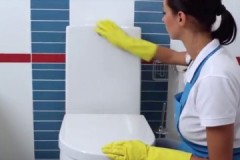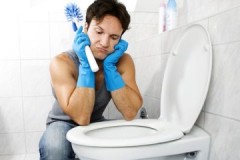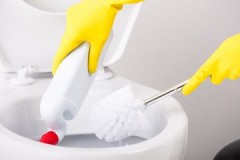Whiter than white, or how to remove limescale in the toilet at home
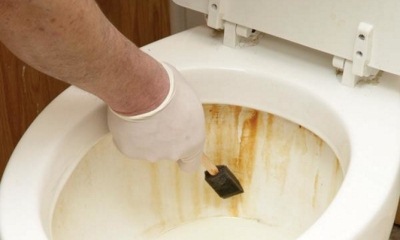 Limescale in the toilet is a common problem faced by housewives. To clean the plumbing, you can use not only purchased products, but also simple homemade recipes.
Limescale in the toilet is a common problem faced by housewives. To clean the plumbing, you can use not only purchased products, but also simple homemade recipes.
Prevention measures applied in practice will help to avoid lime accumulation. How to remove limescale in the toilet with improvised means and special preparations will be discussed in the article.
Content
Causes of the problem
Limescale is the result of the deposition of salts in the water. The harder water enters the home, the faster plaque will form. This precipitate has a yellowish tint. It can be seen in flush areas and near the rim of the toilet.
Limescale is characteristic not only of the toilet, it can appear in sinks, showers and bathtubs.
How to remove deposits with improvised means?
To eliminate lime, you can use the tools available at home. They are used mainly when it is necessary to remove fresh lime deposits.
You should also take care of the tools in advance:
- toilet brush;
- rags;
- sponge on a long handle.
Vinegar and soda
The baking soda and vinegar method can be used to remove thick lime deposits. To clean the toilet properly, you must first scoop out the water from the bottom, freeing access to areas with contamination. You can also use a syringe used by motorists for pumping engine oil from a car for these purposes.
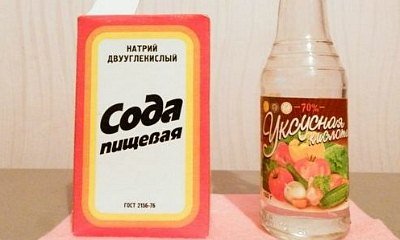 Procedure:
Procedure:
- Pour 2 cups of vinegar into a fireproof container and heat it to 38 degrees.
- Add 2 rounded teaspoons of baking soda.
- Pour the mixture down the toilet.
- Leave on for 6 hours.
- Rub the places with a lime brush.
- Wash off.
Areas difficult to access can be treated in this way:
- moisten napkins in a soda-vinegar mixture;
- apply napkins to limescale;
- leave for exposure.
Lemon acid
Citric acid can react with the lime layer and help break it down. Application:
- Pour 75 grams of citric acid powder, rubbing it in with a sponge.
- Withstand 1.5-2 hours.
- Rub the dirt with a brush.
- Wash off.
Hydrochloric acid
Acid at a concentration of 33% is a toxic, highly corrosive substance, which should only be used with reliable protection of the body and respiratory organs. Application:
- Pour 100-200 ml of the drug into the toilet.
- Leave on for 20 minutes.
- Wash off.
The drug is able to cope even with chronic plaque.
Coca Cola
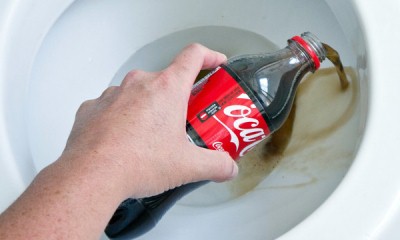 To eliminate lime, cola must be poured into the toilet so that all problem areas are covered.
To eliminate lime, cola must be poured into the toilet so that all problem areas are covered.
Leave to stand for several hours, rinse with a brush... In advanced cases, it is advisable to scoop out the water before pouring the drink.
It is recommended to use Coca-Cola, since it contains orthophosphoric acid, a substance effective against lime deposits.
White
You can use any product containing chlorine. For example, Whiteness. Treatment with a chlorine-containing composition allows not only to eliminate plaque, but also to disinfect the toilet.
Application:
- pour Whiteness into the toilet directly from the package;
- leave overnight;
- rub with a brush;
- Rinse.
If the lime layer is dense, then you must first scoop out the water from the bottom, and only then pour in the Whiteness (at least 300 ml). The drug must be spread over the bottom and walls with a brush.
Monochloride iodine
A drug from a veterinary pharmacy can be used to clean toilet bowl. Iodine monochloride breaks down lime very quickly. Before applying, remove water from the bottom and apply the product to areas affected by plaque. After two to three minutes, the product is washed off.
It is impossible to use the drug in cases where the sewer pipes are cast iron. This is due to the fact that the drug can react and lead to damage to the sewer pipes.
Electrolyte
Non-standard use of auto chemical products - for removing lime and rust. Using:
- pour 200-250 ml of the drug into the toilet;
- distribute with a brush along the walls;
- withstand a quarter of an hour;
- Rinse.
This method is not acceptable if plastic pipes are used to drain wastewater, and not metal ones.
How to clean with special preparations?
In situations where the plumbing has not been cleaned for a long time, and significant lime deposits have accumulated in the toilet, homemade recipes may not be effective enough. In this case, household chemicals designed for high-quality cleaning will come to the rescue.
 The choice of household chemicals should take into account:
The choice of household chemicals should take into account:
- The composition of the product.
- The volume and type of container.
- The price.
- Terms of use.
- Economical consumption.
- Release form.
It is most convenient to use gel and liquid forms of products, which are available in packages with a curved spout. This allows even hard-to-reach areas under the rim to be processed.
With an installed septic tank, the choice of household chemicals, including for cleaning the toilet bowl, should be especially picky. It is better to give preference to biodegradable drugswith an environmentally friendly natural composition.
Before using the selected product, be sure to read the instructions for use on the package.
Domestos
The all-in-one toilet bowl cleaner comes in the form of a cleaning gel that is applied under the rim. Thanks to the concentrated formula, the product is economically consumed.
Drug action:
- lime removal;
- elimination of microbes;
- giving freshness.
The purpose of the gel is disinfection and cleansing. Contains chlorine. Price - from 70 rubles per 0.5 liter package.
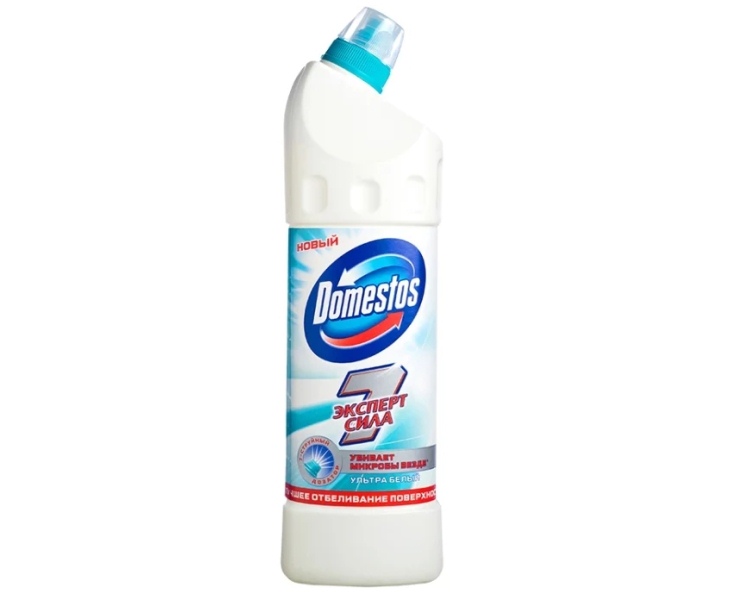
Dressing Duck Super Strength
The product in gel form is intended for cleaning the toilet bowl from limescale, for antibacterial treatment and odor elimination. The product contains acid... A capacity of 0.5 liters costs from 150 rubles.
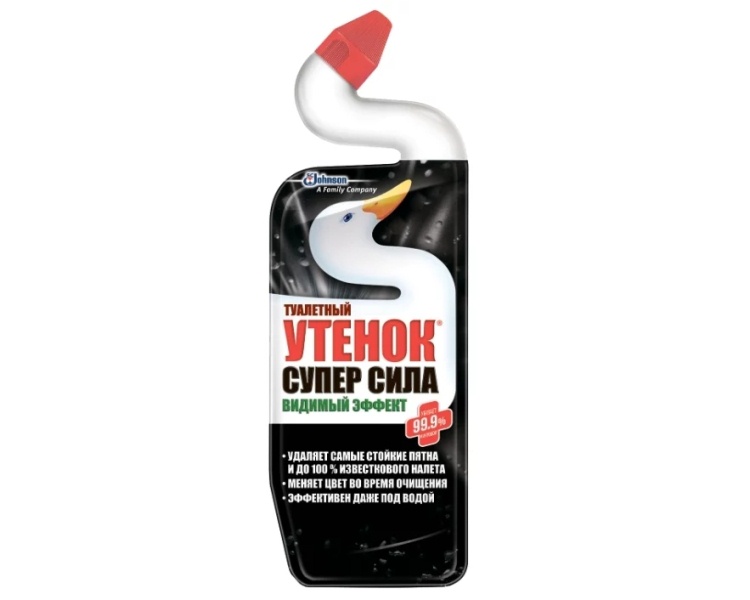
Expel gel
The product is designed to remove rust and lime deposits on the toilet bowl. The product contains citric acid, which is harmless to a septic tank. The cleaning gel is gentle on the surface, has an organic composition, and does not contain chlorine. Price per package - up to 350 rubles.
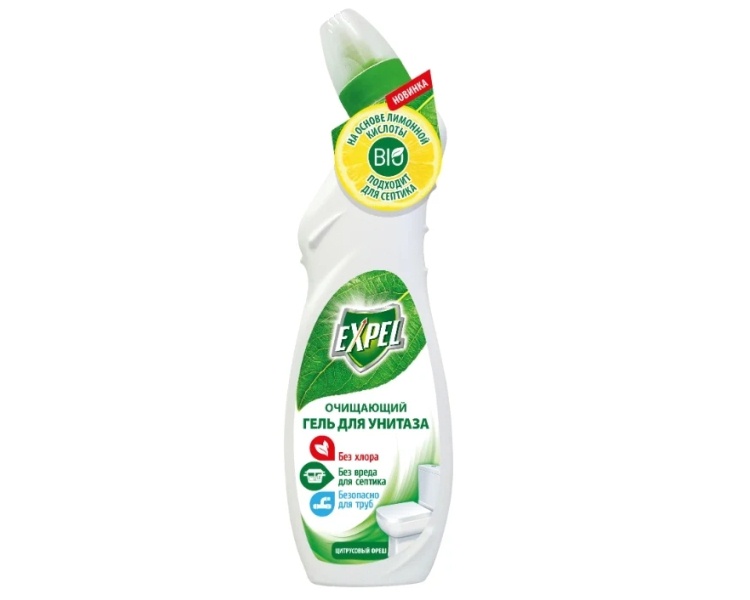
Preventive measures
In order to prevent limescale from forming in the toilet, preventive measures must be used. These include:
- Carry out regular cleaning to avoid the formation of significant lime deposits.
- Use of cistern tablets. In this case, each time the water is flushed, the toilet will be treated. An additional plus is a pleasant aroma.
- A thorough cleaning of the toilet should be done at least once a week.
- Tank leaks contribute to the formation of a layer of lime and rusty streaks. To avoid this, it is necessary to monitor the health of the plumbing equipment, and eliminate all breakdowns in time.
- Do not flush cooking grease and items that can cause blockages, obstruct the passage of water in the system, or contribute to sedimentation down the toilet.
Cleaning prohibitions
In the process of cleaning the toilet you should remember about a number of restrictions and prohibitions:
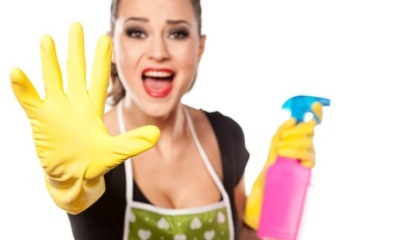 Do not use metal objects and tools with sharp edges for processing, as they can damage the surface of the toilet bowl itself.
Do not use metal objects and tools with sharp edges for processing, as they can damage the surface of the toilet bowl itself.- Chemicals should not be kept on the surface for longer than the specified time, since with very long contact, aggressive chemicals can destroy the upper layers of the toilet bowl material.
- You should not use boiling water to flush the toilet bowl, as hot water can burst faience or go into a network of microcracks. It is possible to use only warm or cold water.
- Do not pour several products into the toilet at the same time. Mixing, they can give an unpredictable reaction, damage plumbing, release toxic fumes, etc. If the drug used does not help, then the new one can be used only after thoroughly rinsing off the previous substance.
Recommendations
When you start cleaning the toilet, it is necessary to follow the following recommendations of cleaning specialists:
- all work must be carried out with rubber gloves;
- a mask will be needed to protect the respiratory tract from corrosive fumes;
- for regular surface treatment, it is recommended to use preparations in gel form, since they damage the toilet bowl material less and dissolve better in water;
- cleaning the toilet bowl must be complemented by washing the lid and seat;
- in extremely advanced cases, re-treatment may be required if the complex plaque was not eliminated the first time.
Related videos
How to remove limescale in the toilet with peroxide and ammonia, the video will tell:
Conclusion
You can remove limescale in the toilet on your own. For cases not started, even improvised means give a good result. But with a large layer of lime, it is recommended to use special household chemicals that act quickly and effectively.

